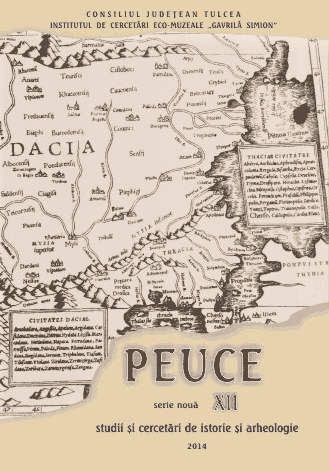Preliminary Considerations on Roman pottery from a rescue excavation at Noviodunum
Preliminary Considerations on Roman pottery from a rescue excavation at Noviodunum
Author(s): Ştefan – Emilian Gamureac, Aurel Stănică, Florin TopoleanuSubject(s): Archaeology
Published by: Institutul de Cercetari Eco-Muzeale Tulcea - Institutul de Istorie si Arheologie
Keywords: Noviodunum Isaccea; pottery; typology; Early Roman period; Getae; archaeological excavation
Summary/Abstract: The pottery analyzed in this paper was excavated during a survey verifying the archaeological potential of the area situated 500 metres SW of the Roman city of Noviodunum, where a 6,000 sqm major construction project will be erected (the Romanian Border Police Headquarters). For this reason, the archaeological team decided to first dig a 30 × 2 m trench N-S orientated. 0.30-0.50 m deep painted plaster, Roman and Early medieval pottery shards, glass, Roman mortar, building materials and a W-E oriented inhumation grave were found. The pottery was discovered in a waste pit 3 × 2 m at the top (-0.55 m), narrowing gradually up to -1.70 m deep. In the same context, some earthen lamps and moulds, which will be published separately, were also found. Rezumat: Ceramica care face obiectul acestui articol a fost descoperită ca urmare a unui sondaj de evaluare de teren pentru verificarea potențialului arheologic a unei zone aflate la aproximativ 500 m S-V de ruinele cetății Noviodunum, teren pe care ar urma să fie realizată o investiție (sediul Poliției de Frontieră – Isaccea) pe cca. 6000 mp. În acest scop a fost practicată o secțiune de 30 × 2 m orientată N – S. La adâncimea de 0,30-0,50 m au fost identificate fragmente de tencuială pictată, fragmente ceramice apaținând epocilor romane și medievale, fragmente de sticlă, mortar, materiale de construcție, un mormânt de inhumație fără inventar, orientat E-V, etc. Ceramica publicată aici a fost descoperită într-o groapă menajeră cu dimensiunile de 3 × 2 m în partea superioară, la - 0,55 m sub nivelul actual de călcare, care se îngustează în trepte până la - 1,70 m. Menționăm că în același context arheologic au mai fost descoperite opaițe și tipare de opaițe care vor face obiectul unui studiu separat.
Journal: Peuce (Serie Nouă) - Studii şi cercetari de istorie şi arheologie
- Issue Year: XII/2014
- Issue No: 12
- Page Range: 115-146
- Page Count: 32
- Language: English

